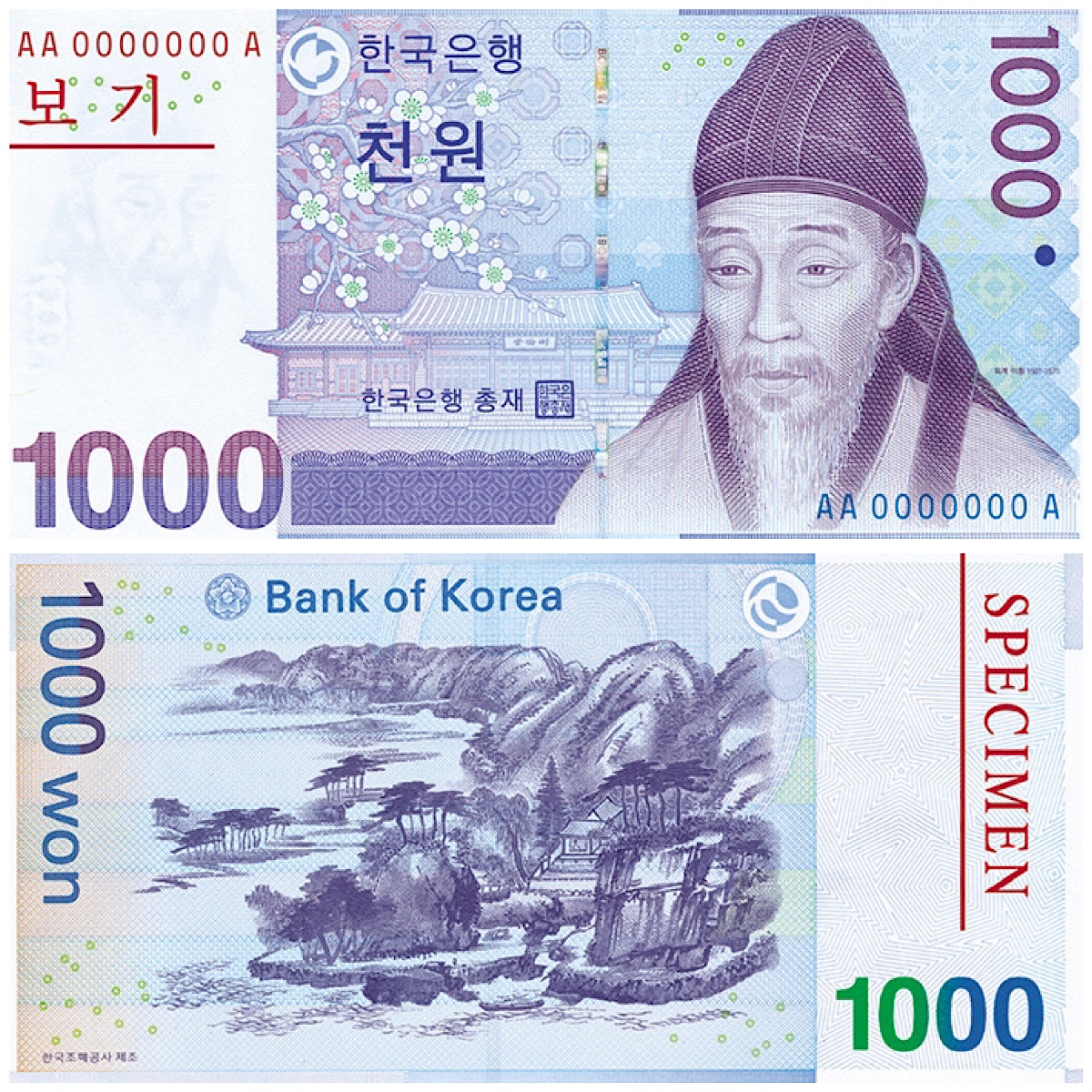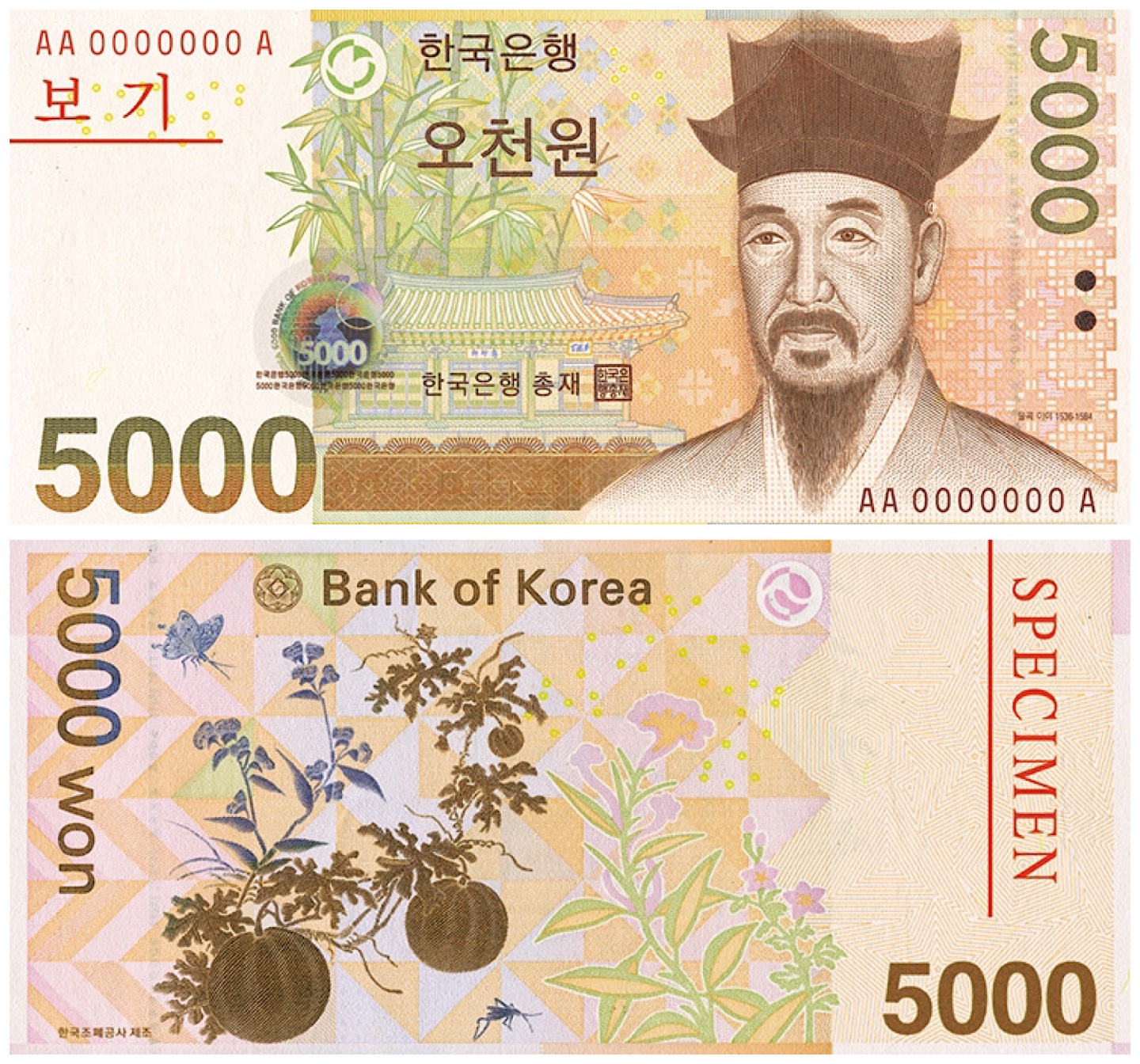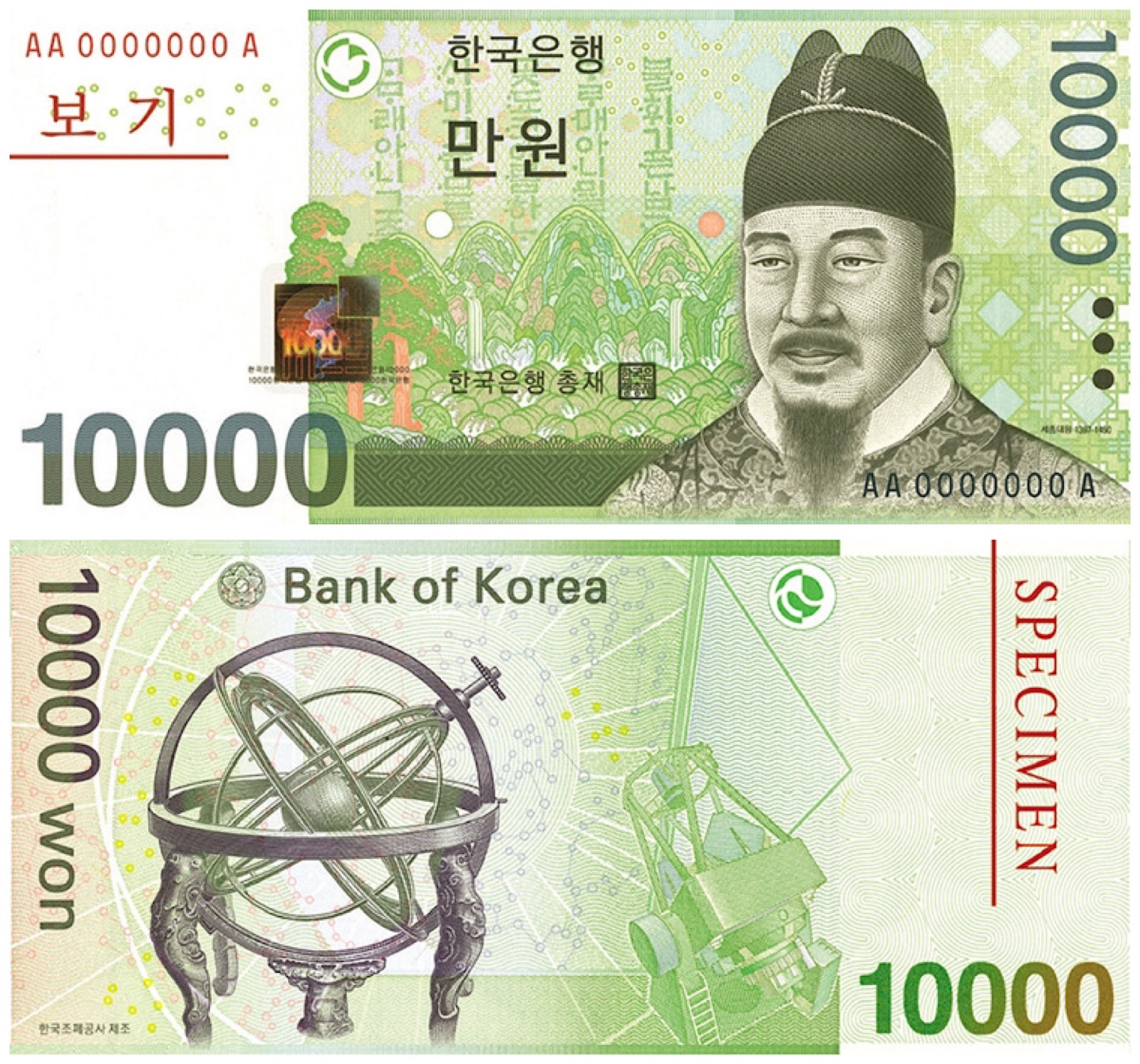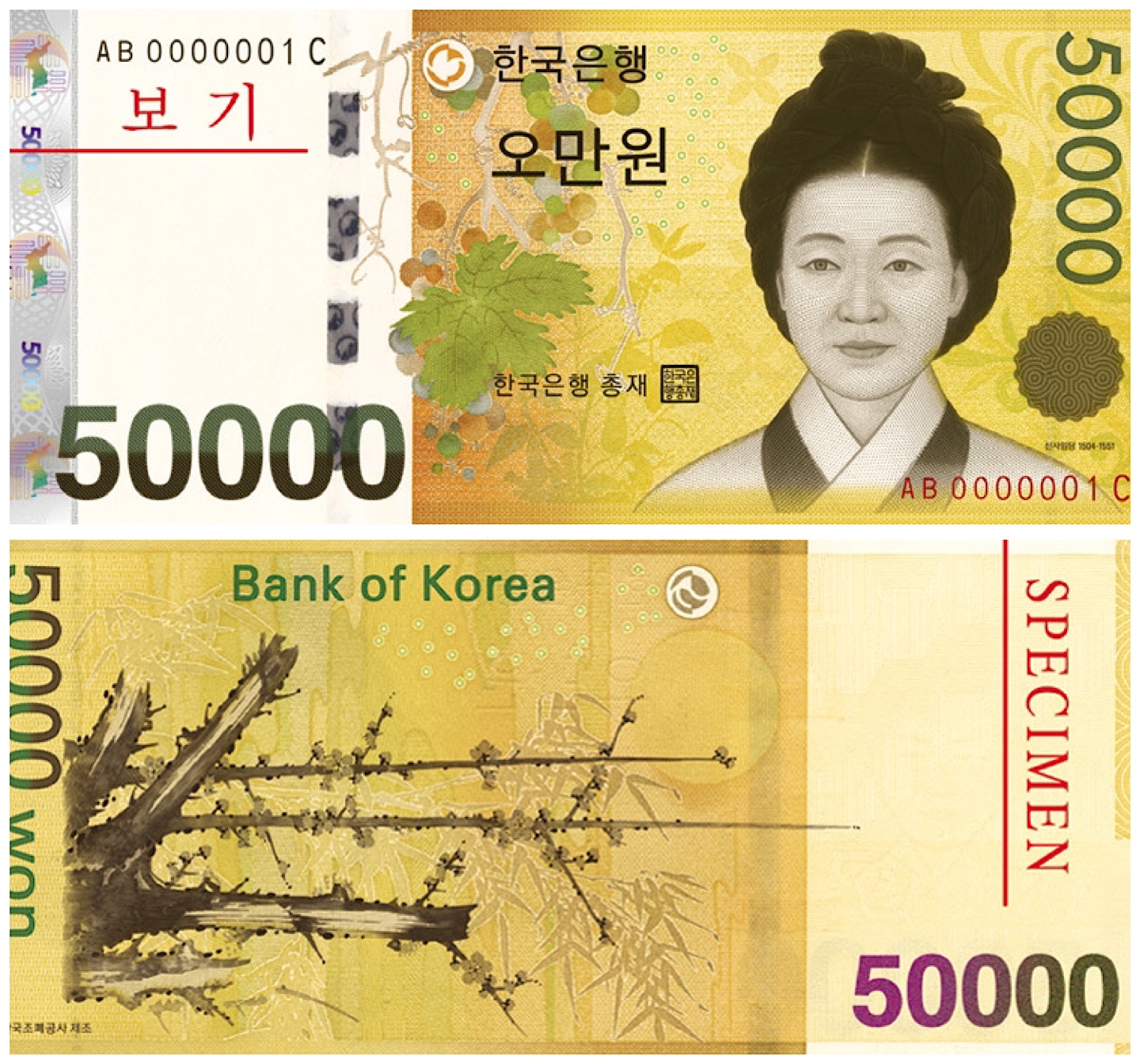Have you ever been curious about the figures we see depicted in our currency? The cash we use daily features various individuals and artwork that represent our country, and understanding these illustrations can provide us with a deeper insight into our nation. In Korea, the country's emphasis on political and religious freedom and neutrality means that current figures in these fields are excluded, and instead, individuals from the Joseon era are featured. The Dankook Herald (DKH) will introduce you to the people and artwork we see on our currency, so you can better appreciate why they were chosen as the face of our bills.
 |
| ▲ Korean 1,000 Won Banknote (Photo from KOMSCO) |
The figure on the front of the 1,000 won bill is Toegye Yi Hwang. Toegye Yi Hwang was a prominent scholar who made significant contributions to establishing the governing ideology of Joseon, known as Neo-Confucianism. He was a respected politician who led Joseon during the reigns of four kings and nurtured numerous disciples. Dankook University has a central library named the ‘Toegye Memorial Central Library’ on the Jukjeon Campus to honor his scholarly spirit. Additionally, to the left of his is Myeongryundang, the Lecture Hall of Seonggyungwan National Academy, where he spent a significant amount of his time.
On the back of the 1,000 won bill is a landscape-style painting called Gyesangjeonggeodo. It depicts the surroundings of Dosanseowon (Confucian Academy), where Toegye Yi Hwang resided. It depicts a serene landscape with a river flowing in the front and mountains in the background, symbolizing the meaning of quietly living by the riverside. In the center, there is a small pavilion, and inside it, you can see Toegye Yi Hwang quietly reading a book.
 |
| ▲ Korean 5,000 Won Banknote (Photo from KOMSCO) |
The figure on the front of the 5,000 won bill is Yulgok Yi I. He was a Neo-Confucian scholar from the Joseon era along with Toegye Yi Hwang. While Toegye Yi Hwang devoted himself to the study of Neo-Confucianism, Yulgok Yi I actively worked not only on theory but also on reforming real problems. Many of the policies and reforms of the late Joseon period were rooted in his ideas. The ‘Yulgok Memorial Library’ on the Cheonan Campus, was named to reflect Yulgok Yi I’s sublime academic style and virtue. The painting on the back of the bill is Chochungdo painted by his mother, Shin Saimdang. It means ‘Grass and insect painting,’ and some of the eight Chochungdo of Shin were inserted in the design of the 5,000 won bill.
 |
| ▲ Korean 10,000 Won Banknote (Photo from KOMSCO) |
The figure on the front of the 10,000 won bill is King Sejong, the fourth king of Joseon. Many people may already know him as the creator of Hangeul, the Korean language. To illustrate this, the upper left of his face is engraved with a part of the Yongbieocheonga, the first book written in Hunminjeongeum (old name for Hangeul) which was created to test the language after it was created. King Sejong not only created Hangeul but also made significant achievements in astronomy. The object located on the back of the bill on the left side is the ‘Honcheonui (armillary sphere).’ It is an astronomical observation instrument made during the reign of King Sejong. They were previously made in China, but since the reign of King Sejong, it was developed locally and used to match the skies of Joseon. The blurred object on the right side of Honcheonui is the astronomical telescope on Bohyeon Mountain. It is the largest astronomical telescope in Korea and symbolizes the development of Korean astronomy that has continued since the reign of King Sejong.
 |
| ▲ Korean 50,000 Won Banknote (Photo from KOMSCO) |
The figure on the front of the 50,000 won bill is Shin Saimdang. She was a versatile and representative female artist and writer in Joseon. She pioneered an independent life unlike typical Confucian women and was considered the first female in the original document for gender equality, contributing to women’s participation in society. She is also the mother of Yulgok Yi I, featured on the front of the 5,000 won bill. It is extremely rare for blood relatives to become figures on a country’s currency. On the back of the bill, Wolmaedo by Eo Mong-ryong and Pungjukdo by Lee Jeong overlap. These paintings show the scholarly culture of Joseon. Wolmaedo portrays an apricot flower on an outstretched branch, expressing the spirit of the scholar. Pungjukdo depicts bamboo that never bends despite the blowing wind, symbolizing the constancy of the scholars.
Korean currency has undergone many changes, yet it still encapsulates Korean history and culture. Elements that reflect the social image of Joseon and notable individuals who achieved great things serve as symbols of Korean pride. For those interested in delving deeper into Korean currency, the DKH recommends visiting a currency museum in Seoul or Daejeon. As history influences future generations, gaining insight into our own through our currency will facilitate a better understanding of who we are and what remains important to us, even today.
박현규, 박상우, 윤희원 dankookherald@gmail.com

 Vote for the Campus Brand Naming!
Vote for the Campus Brand Naming!

![[Campus Magnifier] Let's Surf the Library!](/news/thumbnail/202404/12496_1765_4143_v150.jpg)




